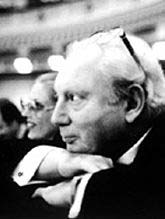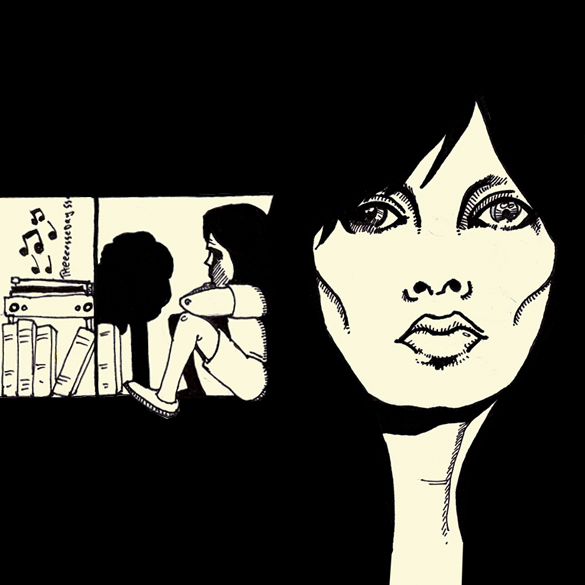 When bombs fell on Pearl Harbor, Isaac Stern was at home in San Francisco, listening to the New York Philharmonic on the radio. Stern, then 21, was already an accomplished professional violinist, and a nascent musical emissary. He was keenly aware, as he later wrote, that “music became a necessary island of peace that, if only briefly, took people away from the enormous strains that were part of everyone’s wartime consciousness.” That insight whetted his career, and it makes his death, eleven days after the atrocity often called the second Pearl Harbor, especially poignant. Again the world comes apart at its seams, but for once Isaac Stern is not available to perform. Losing him is one of the less cited but more mournful ways in which, last September, we ended an era.
When bombs fell on Pearl Harbor, Isaac Stern was at home in San Francisco, listening to the New York Philharmonic on the radio. Stern, then 21, was already an accomplished professional violinist, and a nascent musical emissary. He was keenly aware, as he later wrote, that “music became a necessary island of peace that, if only briefly, took people away from the enormous strains that were part of everyone’s wartime consciousness.” That insight whetted his career, and it makes his death, eleven days after the atrocity often called the second Pearl Harbor, especially poignant. Again the world comes apart at its seams, but for once Isaac Stern is not available to perform. Losing him is one of the less cited but more mournful ways in which, last September, we ended an era.
Of course it’s unlikely that had he stayed around, Stern would have stopped the war. But certainly he would have defended that island of peace, in a way that would inevitably seem more enduring and articulate than any candle-lit pop-star TV benefit or Madison Square Garden rock-a-thon. He would have done what he always had: persuasively reiterated the value of music, and by extension, the value of human civilization.
That’s a tall order, but Stern took it personally. Even the current crop of great instrumentalists, many of whom he taught and some of whose technical abilities admittedly exceeded his own, can’t match his pervasive cultural influence. To begin with, Stern performed, and recorded, all the major works for violin, including some, like Leonard Bernstein’s Serenade, that were composed with him in mind. He appeared on every major stage in the world (and, if surreptitiously, in a few classic films, like Fiddler on the Roof). Most importantly, he guarded music’s treasures, whether by nurturing young talent, preserving property, or ensuring high visibility and financial support. The Stern era was anything but idle, and his advocacy was self-propagating: the fate of orchestral music in the 21st century will owe much to its guidance from Isaac Stern in the 20th.
His real memorial, and the altar to his legacy, is Carnegie Hall, a place he once described as “America’s promissory note for the future of music.” If you know anything about Carnegie Hall, you know that the way to get there is by practicing, that it’s the heart of New York’s—if not the Western world’s—musical culture, and that it would be long gone were it not for Isaac Stern. In 1960, Stern took stock of the hall’s past and took action for its future, famously leading the campaign to save it from demolition, and officially inaugurating himself as a musical activist. He served as the hall’s president from then until his death, helped restore it in 1986, and of course performed there, hundreds of times. Stern would probably agree that if one of them absolutely had to go, better him than Carnegie Hall.
And so, perhaps it is ungracious to have expected another encore, to keep applauding with the hope that he’s not really gone, that he’ll return to offer some solace for these trying times with one more show, one more chance to see him live under the lights—the spry bounce of his snow-white tufts; the glint of thick horn-rims; the eyebrows arching, furrowing, arching again; the jowly cheeks trembling, perspired; the rapt, inward focus or the impish, dimpled grin. And of course, the fiddle itself, the glorious music.


i will miss isaac stern. i saw him perform there in 1973 and cried at the end.
I just like the valuable info you supply on your articles.
I’ll bookmark your blog and test again here regularly.
I’m rather sure I will be informed many new stuff right right here!
Good luck for the next!